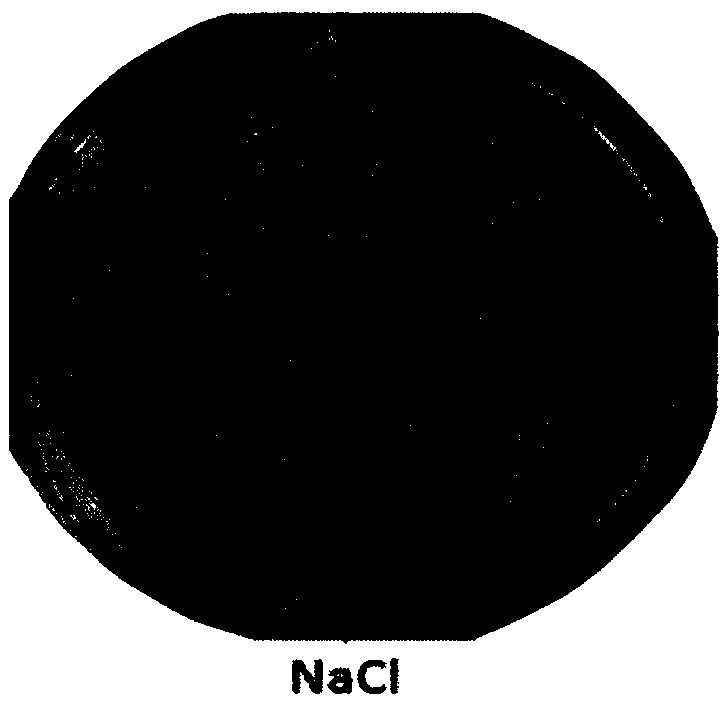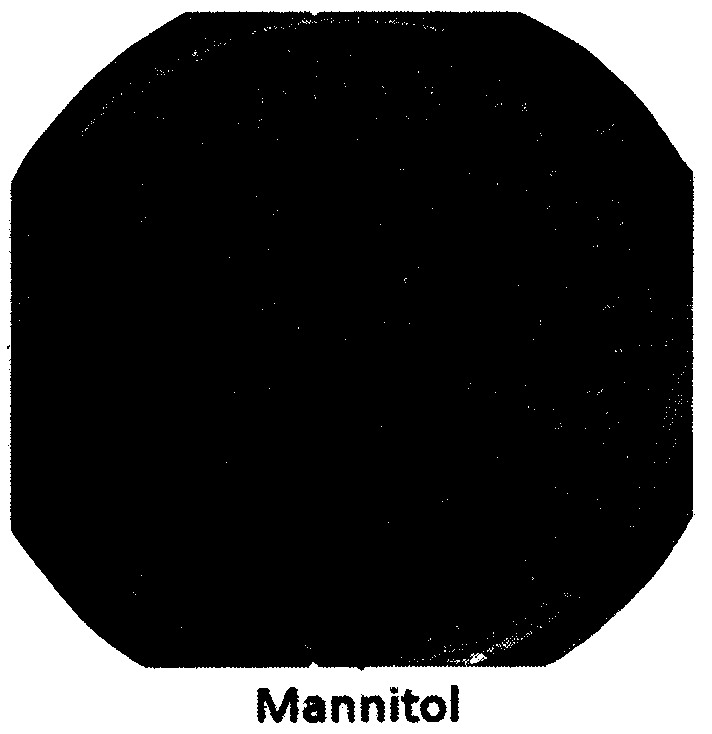Application of Stress Resistance Gene vqbzip39 in Wild Vitis vinifera-24
A kind of hair grape, gene technology, applied in the application, genetic engineering, plant genetic improvement and other directions
- Summary
- Abstract
- Description
- Claims
- Application Information
AI Technical Summary
Problems solved by technology
Method used
Image
Examples
Embodiment 1
[0025] Example 1: Germination of overexpressed transgenic lines and wild controls under osmotic stress (specific data are shown in Table 1)
[0026] The three transgenic lines (L7, L27, L42) and the wild control (WT) began to germinate on MS medium at 2 days, and the germination rate could reach more than 93% after 5 days ( Figure 1a shown). After culturing on the medium containing sodium chloride and mannitol for 5 days, the germination rates of the transgenic lines (L7, L27, L42) on the sodium chloride medium reached 54.31%, 58.76%, and 60.32%, respectively, while The germination rate of the wild control (WT) was only 10.99%, significantly lower than that of the transgenic plants ( Figure 1b shown). On the medium containing mannitol, the germination rates of the transgenic lines (L7, L27, L42) reached 58.30%, 62.95%, 71.86%, respectively, while the germination rates of the wild control (WT) were only 17.92% ( Figure 1c Shown), the germination rate among the three is co...
Embodiment 2
[0029] Embodiment 2: The resistance of the T3 generation seedlings of the wild hair grape merchant-24 stress-resistant gene VqbZIP39 transgenic Arabidopsis to osmotic stress (specific data are shown in Table 2)
[0030] In order to further measure the response of VqbZIP39 transgenic lines (L7, L27, L42) to osmotic stress, the inventors transplanted 7-day-old seedlings sown in MS medium to MS medium containing 125mM NaCl And 200mM mannitol osmotic medium was treated with osmotic stress, and the chlorophyll content, electrical conductivity, malondialdehyde (MDA) content, proline content and endogenous ABA content were measured after one week of treatment. The results showed that the chlorophyll contents of the three transgenic lines (L7, L27, L42) were 0.28, 0.33, 0.33 mg / g fresh weight respectively after sodium chloride stress, while the chlorophyll contents of the wild control (WT) were 0.10 mg / g. gFresh weight. After mannitol treatment, the chlorophyll contents of the three ...
Embodiment 3
[0034] Example 3: The resistance of T3 generation plants of the wild hair grape merchant-24 stress-resistant gene VqbZIP39 transgenic Arabidopsis thaliana to salt stress and drought stress.
[0035] It has been proved in previous studies that the stress-resistant gene VqbZIP39 of the wild Vitis vinifera-24 responds positively to both salt stress and mannitol stress, so the inventors focused on the responses of adult Arabidopsis plants to various stresses.
[0036] In order to avoid the influence of external and human factors, the inventors planted transgenic plants [VqbZIP39-7(L7), VqbZIP39-27(L27) and VqbZIP39-42(L42)] and wild controls in the same plug (as shown in Figure 3a- a). The three-week-old seedlings were treated with salt stress and drought stress. The results showed that after one week of salt stress treatment, the transgenic plants (L7, L27, L42) and the wild control (WT) showed significantly different traits. The wild control plants all showed serious withered a...
PUM
 Login to View More
Login to View More Abstract
Description
Claims
Application Information
 Login to View More
Login to View More - R&D
- Intellectual Property
- Life Sciences
- Materials
- Tech Scout
- Unparalleled Data Quality
- Higher Quality Content
- 60% Fewer Hallucinations
Browse by: Latest US Patents, China's latest patents, Technical Efficacy Thesaurus, Application Domain, Technology Topic, Popular Technical Reports.
© 2025 PatSnap. All rights reserved.Legal|Privacy policy|Modern Slavery Act Transparency Statement|Sitemap|About US| Contact US: help@patsnap.com



